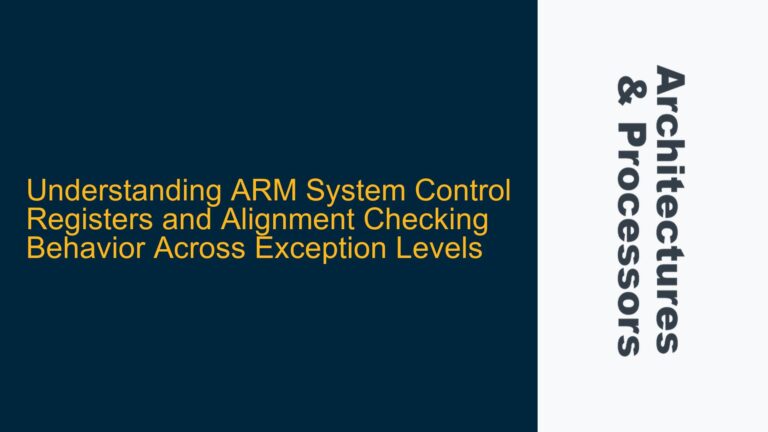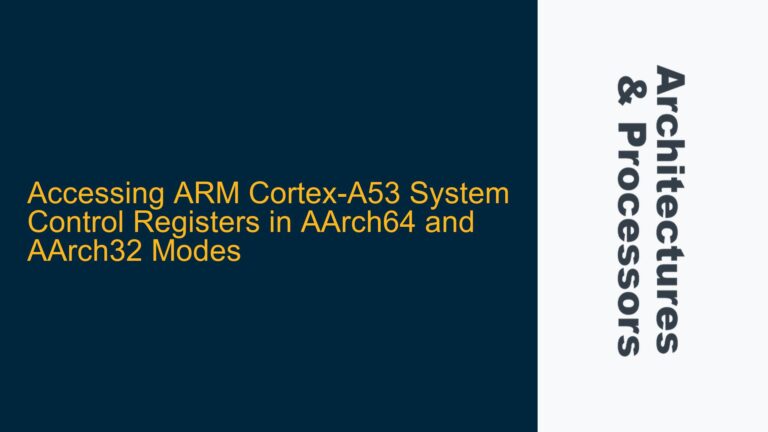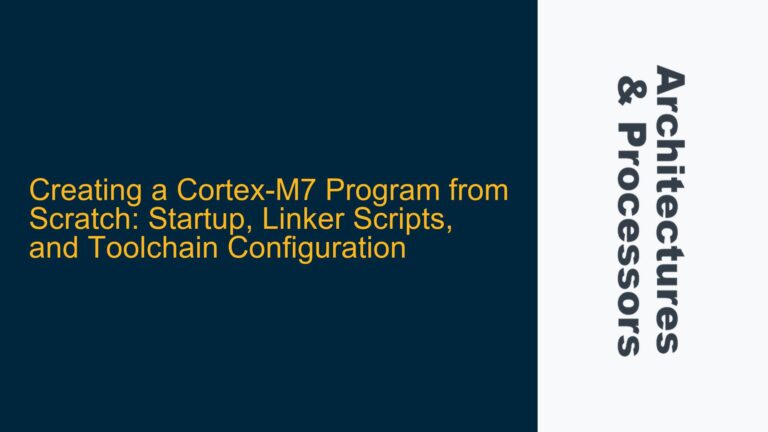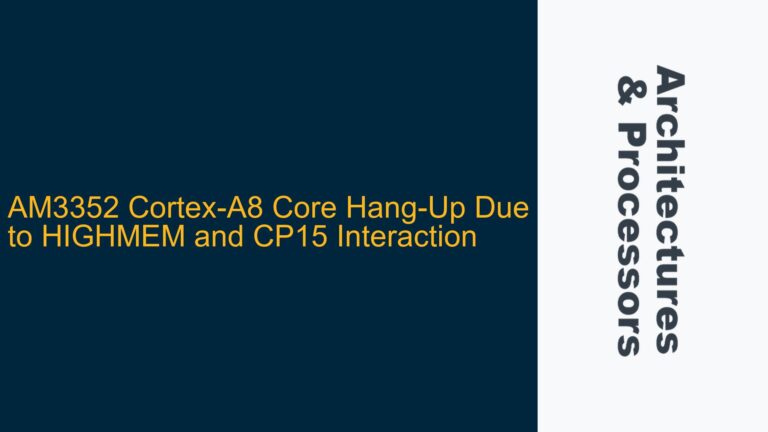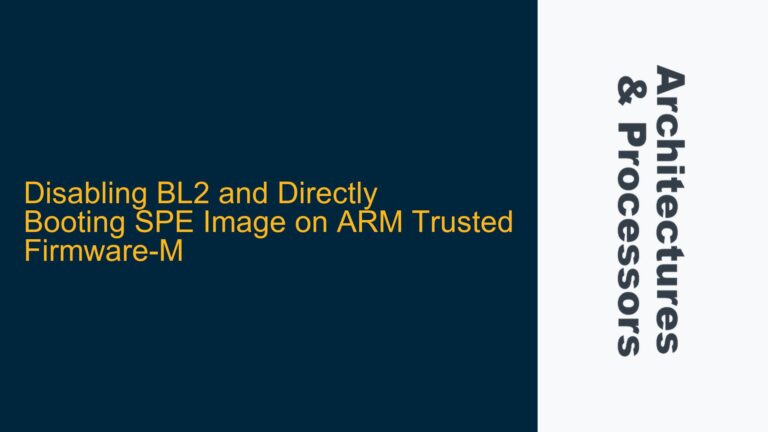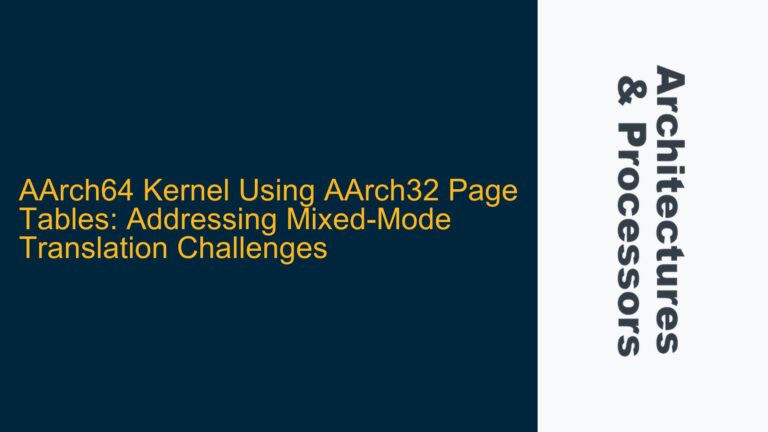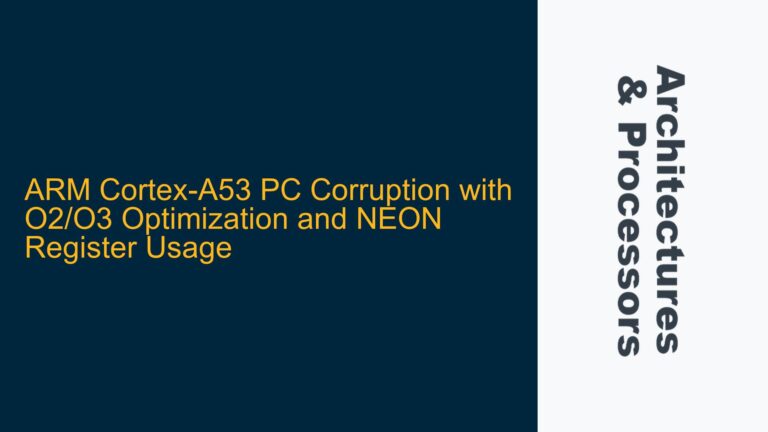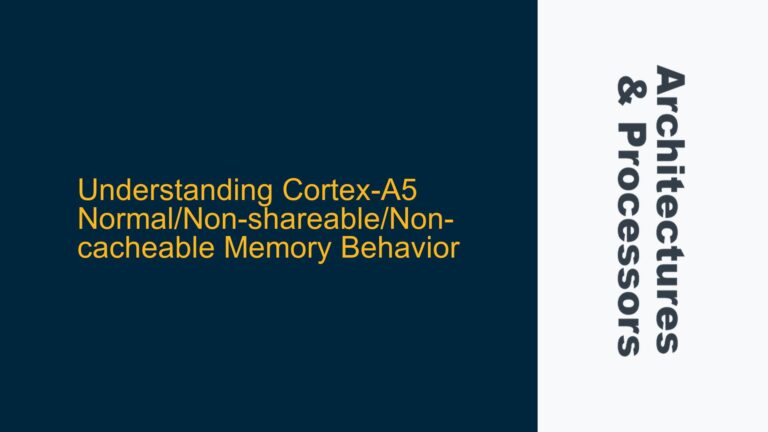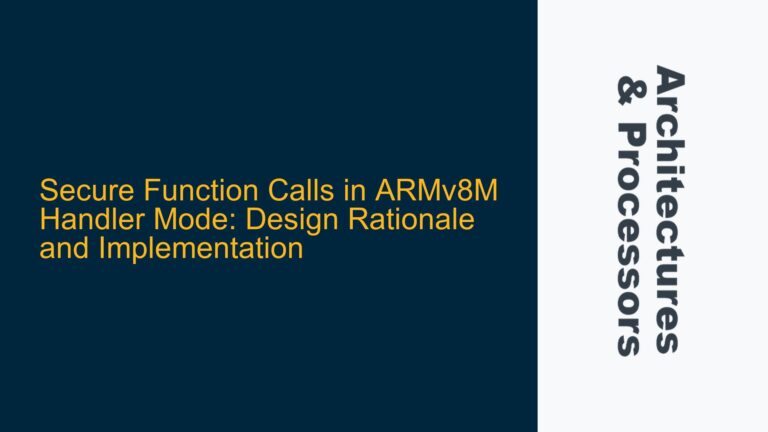ARM System Control Registers and Alignment Checking Behavior Across Exception Levels
ARM System Control Registers and Their Role in Alignment Checking The ARM architecture, particularly in its ARMv8-A implementation, employs a hierarchical system of control registers to manage various aspects of processor behavior. Among these, the System Control Registers (SCTLR) play a pivotal role in configuring system-level features, including memory management, cache behavior, and alignment checking….
